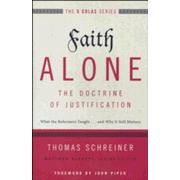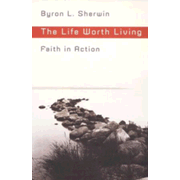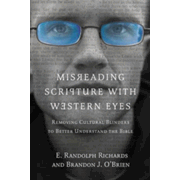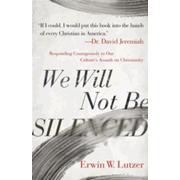OUR READING for All Saints Sunday comes from the Gospel
According to Saint John. Within the text provided, we repeat a previous lesson about the raising of
Lazarus as a sign of God’s powerful love freely given.
Now a certain man was
ill, Lazarus of Bethany,
the village of Mary and her sister Martha. It was Mary who anointed the Lord with
ointment and wiped his feet with her hair, whose brother Lazarus was ill. So
the sisters sent to him, saying, "Lord, he whom you love is ill."
But when Jesus heard it he said, "This
illness is not unto death; it is for the glory of God, so that the Son of God
may be glorified by means of it."
Now Jesus loved Martha and her sister and
Lazarus. So when he heard that he was ill, he stayed two days longer in the
place where he was. Then after this he
said to the disciples, "Let us go into Judea
again."
The disciples said to him, "Rabbi, the
Jews were but now seeking to stone you, and are you going there
again?"
Jesus answered, "Are there not twelve
hours in the day? If any one walks in the day, he does not stumble, because he
sees the light of this world. But if any
one walks in the night, he stumbles, because the light is not in him."
Thus he spoke, and then he said to them, "Our friend Lazarus has fallen
asleep, but I go to awake him out of sleep."
The disciples said to him, "Lord, if he
has fallen asleep, he will recover."
Now Jesus had spoken of his death, but they
thought that he meant taking rest in sleep. Then Jesus told them plainly,
"Lazarus is dead; and for your sake I am glad that I was not there, so
that you may believe. But let us go to him." Thomas, called the Twin, said
to his fellow disciples, "Let us also go, that we may die with
him."
Now when Jesus came, he found that Lazarus had
already been in the tomb four days. Bethany was near Jerusalem, about two miles
off, and many of the Jews had come to Martha and Mary to console them
concerning their brother.
When Martha heard that Jesus was coming, she
went and met him, while Mary sat in the house. Martha said to Jesus,
"Lord, if you had been here, my brother would not have died. And even now
I know that whatever you ask from God, God will give you."
Jesus said to her, "Your brother will
rise again."
Martha said to him, "I know that he will
rise again in the resurrection at the last day."
Jesus said to her, "I am the resurrection
and the life; he who believes in me, though he die, yet shall he live, and
whoever lives and believes in me shall never die. Do you believe
this?"
She said to him, "Yes, Lord; I believe
that you are the Christ, the Son of God, he who is coming into the world."
When she had said this, she went and called her sister Mary, saying quietly,
"The Teacher is here and is calling for you." And when she heard it, she rose quickly and
went to him.
Now Jesus had not yet come to the village, but
was still in the place where Martha had met him. When the Jews who were with
her in the house, consoling her, saw Mary rise quickly and go out, they
followed her, supposing that she was going to the tomb to weep there.
Then Mary, when she came where Jesus was and
saw him, fell at his feet, saying to him, "Lord, if you had been here, my
brother would not have died." When Jesus saw her weeping, and the Jews who
came with her also weeping, he was deeply moved in spirit and troubled; and he
said, "Where have you laid him?" They said to him, "Lord, come
and see."
Jesus wept.
So the Jews said, "See how he loved him!"
But some of them said, "Could not he who
opened the eyes of the blind man have kept this man from dying?"
Then Jesus, deeply moved again, came to the
tomb; it was a cave, and a stone lay upon it. Jesus said, "Take away the
stone." Martha, the sister of the dead man, said to him, "Lord, by
this time there will be an odor, for he has been dead four days."
Jesus said to her, "Did I not tell you
that if you would believe you would see the glory of God?"
So they took away the stone. And Jesus lifted
up his eyes and said, "Father, I thank thee that thou hast heard me. I
knew that you hear me always, but I have said this on account of the people
standing by, that they may believe that you did send me."
When he had said this, he cried with a loud
voice, "Lazarus, come out."
The dead man came out, his hands and feet
bound with bandages, and his face wrapped with a cloth. Jesus said to them,
"Unbind him, and let him go."
Many of the Jews therefore, who had come with
Mary and had seen what he did, believed in him… (John11:32-45a)
What Does It Take?
This story here from the gospel of John was intended to
bolster faith that Jesus was indeed the Messiah. The writer tried to prepare
the hearers’ minds for the good news of our Lord's own resurrection, and thus
strengthen the resolve of the early Christians. Reading this account from a day
which preceded Jesus’ death and Resurrection, the early churches of John could
not say that resurrection was impossible.
We note as the
telling began that Jesus answered the request for his presence, but not
immediately. Yet it showed that God had gracious intentions even when he seemed
to delay. We can take from this, that whenever the work of divine deliverance
whether physical or spiritual, public or personal, seems to be delayed, it does
not mean that healing is denied. God’s attention is not absent, it just may not
work favorably until the right time.
Originally, the
disciples thought that it was needless for Jesus to go to Lazarus. We might
guess that they wanted him to heal his friend without going to Bethany. Possibly
they were being cautious because returning to Bethany, located just outside the
walls of Jerusalem, would expose them all to danger. Hadn’t they just fled the
zealous powers of unbelieving persons? But note here! Lest we judge the early
disciples too harshly, remember that today we also are brought to hope that
good works will be done by someone else… especially if great peril exists in
the doing.
Jesus went to Bethany
in spite of the hazard. He found that Martha’s house, once a place of love, care
and concern, was through death made a house of mourning. As Jesus walked by
grace toward her house, it is of little doubt that he went with love to be expressed
in ways of mercy and comfort far greater than could be imagined.
Hearing that he approached,
Martha went out to meet him. She told him what he already knew. Lazarus was
dead.
But Martha exhibited
faith. She believed that Jesus could ask God for anything, and it would be
granted. We repeat for emphasis, his response to her faith…
Jesus said to her,
"I am the resurrection and the life; he who believes in me, though he die,
yet shall he live, and whoever lives and believes in me shall never die. Do you
believe this?"
Martha answered, “Yes Lord, I believe…”
Amid this, Jesus provided that for God neither
time nor death are barriers. Indeed, Mary had been sitting alone in the house. Her
solitude at one time was advantage for her when she sat at Jesus’ feet. In that
day of loss, however, the same time of independence disposed her toward being melancholy.
Lazarus had been dead four days.
Here I believe that
John demonstrates much to his readers. He stressed that too much time had passed.
By this our author stressed that with God it is no harder to restore life in
one moment, than in another. It was commonly thought amongst the Jews that
after three days the spirit had completely left the body laid to rest… surely
by human standards the expiration date had long passed.
Jesus stated clearly to
Martha that he is the Resurrection and the Life. In every sense, John pointed out
to his readers that Jesus is the source, the substance, the first-fruits, the
very cause of life. Consequently for Martha and even believers living today, death
cannot have the last say.
Jesus then asked
Martha if she believed this Truth. We ask ourselves, we who read such miraculous
news sitting in a day of peace at Christ's feet… and are taught by him. “Can we
run from solitude like Mary to join in his community? Can we proclaim Christ,
crucified and Risen even in days of unbelief and persecution?”
What of Loving Power?
The early church of John, upon hearing this lesson was
called by the writer to cast unbelief, persecutions and death at God’s feet. Thus
we too are called as well to do act in faith whenever we suffer loss. As the people
of God we are admonished by John to corporately “only believe” when we are assailed
by times of trial.
Note Jesus’ tender
sympathy with faithless mourning was shown by tears. Whether it was tearful anger
at sin, or sorrow because of unbelief… we cannot know. We do know that he loved
greatly. His feelings for mourning friends showed up immediately. He asked after
the remains of the deceased man.
Jesus arrived at the
tomb and he demonstrated that God does not let death have the final say. Being
a man of tears and acquainted with grief, Jesus Christ thus set an example in that
we too should be brought to tears in our comforting of the afflicted today. We too
are called to cry out… but not just for the passing and missing of someone deeply
cared about… but rather we are called to mourn a greater loss. We are to grieve
sinful stubbornness and unbelief.
By this lesson we are
surely to know that we have not a High Priest who is distant from our
infirmities and finitude. Indeed, Jesus could have raised Lazarus by a distant
and silent exertion of his power and will. He could have acted in a remote, unseen
way. Instead, John tells us that God is intimately
involved and willing to shed tears. So should we be also involved in the lives
and deaths of others. Jesus provided a call for each of us in full sight of
others. Surely those whom Christ loves become sick and bodily die. This tells
us that Jesus came not to preserve his people from afflictions, for we still
suffer under the condemnation of the Law… but he came into the world to save us
from the penalty of our sins. We are not abandoned to the grave. Through the
mercy of God provided through his Son, death like sleep shall not eternally
hold us.
For the church of John this lesson provided a prophetic call
as they were sent out into a hostile world. Persecutions were hard upon the
young church in the last years of the first century, but here they were pronounced
as not standing over against the love of God. John told that Lazarus had been
revived and had returned not only to life, but to health. So it was told to be the
future with John’s church as they faced the world. They proclaimed the gospel
of God on into the next era. The church had been separated, disdained, and
declared dead by authorities. Yet those churches of John were proven alive, even
though they were driven into the cemetery catacombs that housed the dead. The
church endured to see God’s glory and we are its descendants.
This good news comes
to us today as we live in our own turbulent time. Evil powers of this modern
world still assail faithful saints of God. Here we are reminded by John,
however, that these things are not new. We are encouraged by the Word of God that
despair, isolation, and even death shall not seize the day. Through the Word given
by the Spirit even unto eternal life we know that believing in his redemptive power,
we of the church eternal shall see the glory of God. So it was then, and so it
shall be now
.







